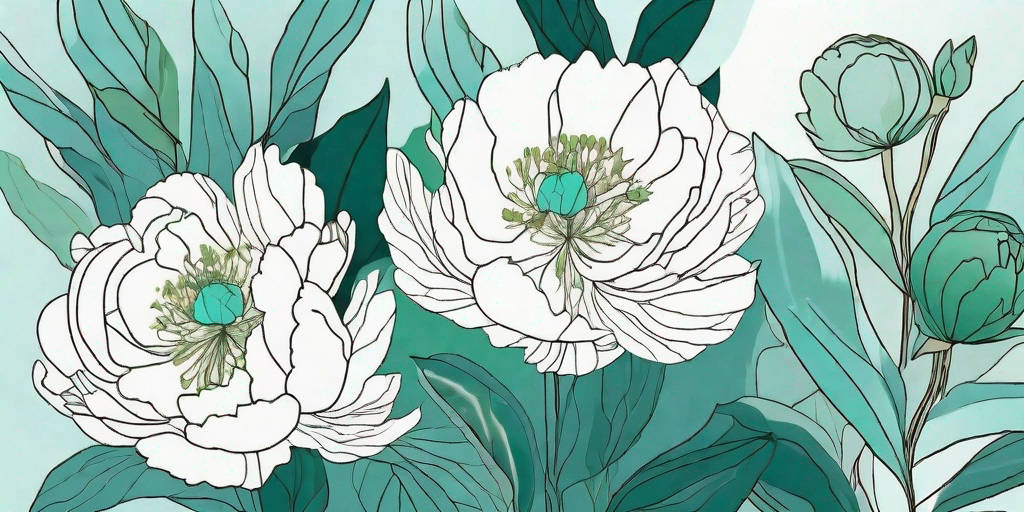
Peonies, those voluptuous blooms that grace our gardens with their presence, are a sight to behold. They are the divas of the flower world, demanding attention with their lush petals and intoxicating fragrance. But don't be fooled by their flamboyant appearance; peonies are surprisingly hardy and can thrive in a variety of conditions. Whether you have a sun-drenched garden or a shady nook, you can grow these beauties with a little know-how and a lot of love.
The Basics of Peony Care
Before we delve into the nitty-gritty of peony care, let's get a few basics out of the way. Peonies are perennials, which means they come back year after year. They prefer a sunny location, but can tolerate some shade. They are not particularly picky about soil, but they do appreciate good drainage. And while they can be a bit slow to get established, once they do, they can live for decades, providing you with a lifetime of floral fabulousness.
Now, let's get down to the brass tacks of peony care. We'll start with the most important aspect: light.
Light Requirements
Peonies are like sunbathers on a beach—they love to soak up the rays. Ideally, they should receive at least six hours of sunlight each day. However, they can tolerate partial shade, especially in hotter climates where the intense afternoon sun can be a bit too much for them.
But what if your garden is more like a shady forest than a sunny beach? Fear not, for peonies can still thrive in your garden. They may not bloom as profusely, but they will still produce flowers. And let's be honest, a few peony blooms are better than none, right?
Soil and Watering
Peonies are not fussy eaters. They can grow in a variety of soil types, as long as the soil is well-draining. They do not like wet feet, so avoid planting them in areas where water tends to pool.
When it comes to watering, peonies are like Goldilocks—they like it just right. Not too much, not too little, but just enough to keep the soil moist. Overwatering can lead to root rot, while underwatering can cause the plants to wilt. So, keep an eye on your peonies and adjust your watering schedule as needed.
Planting and Pruning Peonies
Now that we've covered the basics, let's move on to the fun part: planting and pruning peonies. Whether you're starting with a bare root or a potted plant, the process is pretty straightforward.
First, choose a location that gets plenty of sunlight and has well-draining soil. Dig a hole that is wide and deep enough to accommodate the root system of the peony. Place the peony in the hole, making sure that the eyes (the small, reddish buds on the root) are facing upwards and are no more than 2 inches below the soil surface. Backfill the hole with soil, firm it gently, and water thoroughly.
Pruning
Peonies don't require much pruning, but a little tidying up can help keep them looking their best. In the fall, after the foliage has died back, cut the stems back to ground level. This helps to prevent diseases from overwintering and gives you a clean slate for the following spring.
If your peonies are looking a bit crowded, you can divide them in the fall. Simply dig up the plant, cut the root into sections, making sure each section has at least one eye, and replant. This is a great way to propagate your peonies and spread the love to other parts of your garden.
Common Peony Problems and Solutions
Despite their hardiness, peonies can sometimes run into problems. Here are a few common issues and how to solve them.
Peonies Not Blooming
If your peonies are not blooming, it could be due to a few reasons. They may not be getting enough sunlight, they may be planted too deeply, or they may be too crowded. Try moving them to a sunnier location, adjusting the planting depth, or dividing them to give them more space.
Peonies with Yellow Leaves
Yellow leaves can be a sign of overwatering or poor drainage. Check the soil around your peonies—if it's constantly soggy, you may need to improve the drainage or move the plants to a drier location.
Peonies with Black Spots
Black spots on the leaves can be a sign of a fungal disease. To prevent this, make sure your peonies have plenty of air circulation and avoid watering the foliage. If the problem persists, you may need to apply a fungicide.
FAQs About Growing Peonies
- Can peonies grow in pots?
Yes, peonies can grow in pots, but they will need to be repotted every few years as they outgrow their containers.
- Do peonies attract pests?
Peonies are generally pest-resistant, but they can sometimes attract ants. However, the ants are harmless and are actually beneficial, as they help to open the peony buds.
- Do peonies need a lot of maintenance?
Once established, peonies require minimal maintenance. They may need some watering during dry spells and a bit of pruning in the fall, but other than that, they are quite low-maintenance.
So there you have it, folks! With a bit of sun (or shade), some well-draining soil, and a dash of TLC, you too can grow these show-stopping blooms in your garden. So go ahead, give it a try. Your garden—and your nose—will thank you.















